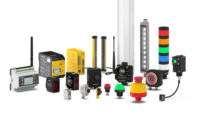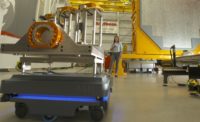New Technology Integrates Radar Sensors Into Headlights

DRESDEN, Germany—The number of sensors required onboard vehicles is constantly increasing, due to growing demand for advanced driver assistance systems. And, as autonomous vehicles proliferate in the future, automotive engineers will need to find new ways to package sensors.
A recent project in Germany called RadarGlass tackled the challenge by integrating sensors into front headlights. Engineers at the Fraunhofer Institute for Organic Electronics, Electron Bean and Plasma Technology (FEP) used thin-film technology to control radar waves without restricting the task of lighting.
A thin, visually transparent functional coating can shape and direct radar beams in a specific way, depending on the requirements of the application. For example, radar beams can be deflected to the side to detect and recognize pedestrians. The beam shape can also be adjusted for short or long range like an eye.
“To shape and direct the radar beams, small areas of the coating must be precisely structured by laser so that they can act as propagation antennas for the radar waves,” says Manuela Junghähnel, Ph.D., project manager at Fraunhofer FEP. “We have developed a thin-film system that is almost transparent in the visible spectrum. It can form high-frequency waves by using a special pattern structure.
“The manufacturing process has been optimized [so] that the coating doesn’t affect the color of the light and withstands temperatures between -30 C and +120 C,” explains Junghähnel. “Obstacles can potentially be detected at a distance of up to 300 meters.
“The RadarGlass project has opened up a wide range of applications in the automotive industry, with a variety of impulses expected to result from the current development trend toward autonomous vehicles,” claims Junghähnel.
Looking for a reprint of this article?
From high-res PDFs to custom plaques, order your copy today!





